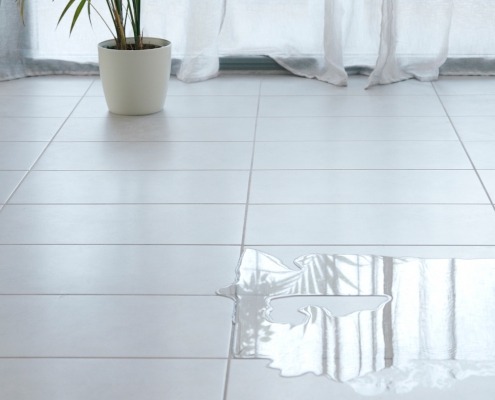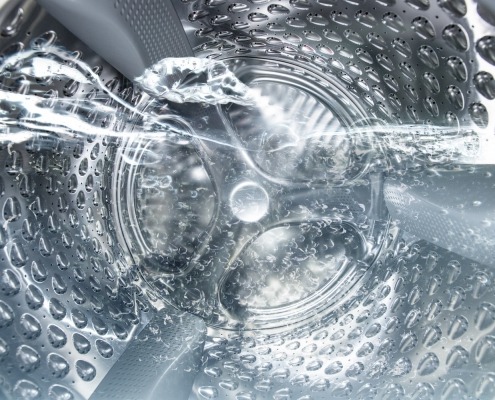Washer Won’t Fill: Top 5 Problems and Fixes for Top-Loading and Side-Loading Washing Machines (With Video!)
APP Expert / Thursday August 12, 2021
Is your washing machine refusing to fill up with water just when you need it most? Don’t worry, you’re not alone in dealing with this common household hassle. Dive into our comprehensive guide, complete with a how-to video below, to troubleshoot and solve this issue yourself, saving both time and money in the process.
If you’re experiencing issues with your washer where it will not fill, there are five main components that could be contributing to the issue. It’s important that you only troubleshoot the problem if you are following basic safety guidelines. The circuit breaker should be turned off for the washing machine or it should be unplugged from the wall. It’s also important to turn off the hot and cold water supply for the washer to avoid accidents. Once your washing machine is safe to work with, troubleshoot using this easy guide to fix it yourself, find the right washing machine parts and save money.
When you have identified the part needed for your washing machine, search below using your specific washer model number to identify the exact part needed:
1. Filter Screens
The first thing to check on when your washing machine won’t fill are the filter screens. These are the part that filters the water as it makes its way into the washer. These screens can be made out of plastic or metal and are designed to keep particles and debris from reaching the washer where they can clog up the water inlet valve.
Two kinds of filter screens are in the washer. One of them is found at the end of the fill hose, and the other is on the inside of the inlet valve. These screens might be clogged if the washer will not fill. Remove the fill hoses and check the screens for clogs. If there is debris, cleaning them may be enough. However, screens that are damaged need to be replaced.
Some models of filter screens have inlet valve screens sold separately, while others do not. If yours is the latter model, the entire valve will need to be replaced instead. If the screens are clean and undamaged, there may be a different component that needs to be replaced.
2. Water Inlet Valve
The second thing to consider if your washer doesn’t fill is the water inlet valve. This part is made to control the hot and cold water that goes into the washer to do a load of laundry. It comes with solenoids that open and close to allow water into the washing machine. If you hear noises during the filling cycle, but the filling doesn’t occur, this is an indication that the water inlet valve may no longer be working. When this happens, it can sometimes fill the tub but still do so slowly or with water that is at the wrong temperature.
A clog in the valve, a damaged coil, or a jammed plunger can cause this problem with your washing machine. Like other components you find on washing machines, water inlet valves are typically sold as one part rather than the individual components. If you find an issue with the valve, replacing it entirely is the only option. Sometimes cleaning the screens can also help, which can be done with a mixture of water and vinegar.
3. Water Level Switch
Next, when a washing machine isn’t filling with water, the water level switch needs to be inspected. This part is responsible for controlling the amount of water that goes into the washer. It’s a pressure switch that shuts the water off when the washer has filled to the desired level. It also sends power to the engine so it can start the wash cycle. The water level switch has two sets of contacts, one that sends power to the tub when it’s filled with water and the other that creates power for the inlet valve while the tub fills.
A top-loading washing machine is going to have the water level switch mounted onto the control panel while front-loading machines are going to have the part mounted to the upper area of the cabinet frame. If the washer isn’t filling up, the contacts may h have gone bad that determine how much water is in the tub. Sometimes an error code will come up, which can be looked up in a user manual to give additional troubleshooting tips.
The switch should be tested with a multimeter set to continuity for top-loading washers. You will need to use the wiring diagram to determine which wires need to be tested. Take off the switch and remove the wires from the wiring harness. Next, place the probes against the motor and power terminals, which shouldn’t have continuity. Then blow into the switch’s hose fitting and see if it shows continuity. If it does not, it’s time to replace the switch.
4. Timer
Another component that can create issues with filling a washing machine is the timer. This is a part that controls the functions of the washer through a set of contacts and at least one cam that is driven by the timer motor. If the washing machine isn’t filling, this could mean that the timer’s contacts may not be working. This means power isn’t being sent to the washer so it can’t go through its cycles.
While there are many different types and styles of timers, most of them are going to be found in the control panel. Check the wiring diagram for your washing machine to determine which terminals will need to be tested to see if the timer is working correctly. Before testing, spin the timer to the beginning of a cycle before pulling out the knob. Next, inspect the wiring harness for the timer and see which terminal the wires plug into.
Use a multimeter to check the appropriate terminals for continuity. First, test the multimeter by putting the probes together to make sure that it is working. Then touch the terminals with the probes. If there is no reading, this is a sign that the timer isn’t working. For washing machines that have this problem, the timer is going to need to be replaced to solve the problem.
5. Main Control Board
The final component that can cause a washing machine to stop filling with water is the main control board. This is only found on some washing machines but it is responsible for controlling the washer functions once you select the settings for a cycle. The component takes information from the interface control board, switches, sensors, and other controls. It initiates and monitors many of the washing machine functions.
If the main control board on the washer isn’t working, it can create issues such as a washing machine that won’t fill. However, different models of washing machines have the main control board in various locations. It might be in the control panel on some washers and under the washer top in others. If this part has failed, the interface might light up and respond to your input but it may not start or fill.
Once you find the location of the main control board, the wiring harnesses need to be inspected to be sure they are correctly connected. If no error code is popping up, the washing machine manual will give information about troubleshooting steps to follow. If the main control board isn’t working anymore, it will have to be replaced.
Where To Find Us
If you need any replacement parts for your appliances, you can enter your model number at AppliancePartsPros.com to locate and order them quickly. Most orders arrive in just two business days, and we have tons of great information in our repair help section and YouTube videos to help you troubleshoot.
Stay connected with the latest DIY tips, tutorial videos, and repair guides by following us on Facebook, Instagram, and Twitter. We love hearing about your repair stories and successes. If you need more help or want personalized guidance, feel free to contact or call us at 877-477-7278. We’re ready to help you take on your next project with confidence!
Since 1999, AppliancePartsPros.com has helped millions of people repair their broken appliances by providing high-quality original parts at well below retail prices, free support and troubleshooting, and award-winning customer service from an expert, friendly, US-based customer support team!
Hi! I’m Matt H., and I’m thrilled to be your guide through the world of appliance repair with over 25 years of invaluable experience in the industry.
From the early days of my career, I have been deeply passionate about appliances and their inner workings. Over the years, I’ve seen it all – from vintage models to the latest cutting-edge technology – and I’ve dedicated myself to mastering the art of repair. With a toolbox in one hand and a wealth of knowledge in the other, I’ve tackled every challenge that has come my way, learning and growing with each repair.
Join me as we dive into the intricacies of appliance repair. From step-by-step repair guides to explanations of common problems and their solutions, I’ll be here to simplify the repair process and empower you with the knowledge you need to keep your appliances running smoothly.
Feel free to explore our blog, ask questions, and leave comments – this platform is a space for learning, sharing, and growing together. Let’s work together to ensure that your appliances continue to serve you for years to come.
Thank you for joining me on this journey, and I look forward to being your go-to resource for all things related to appliance repair!





